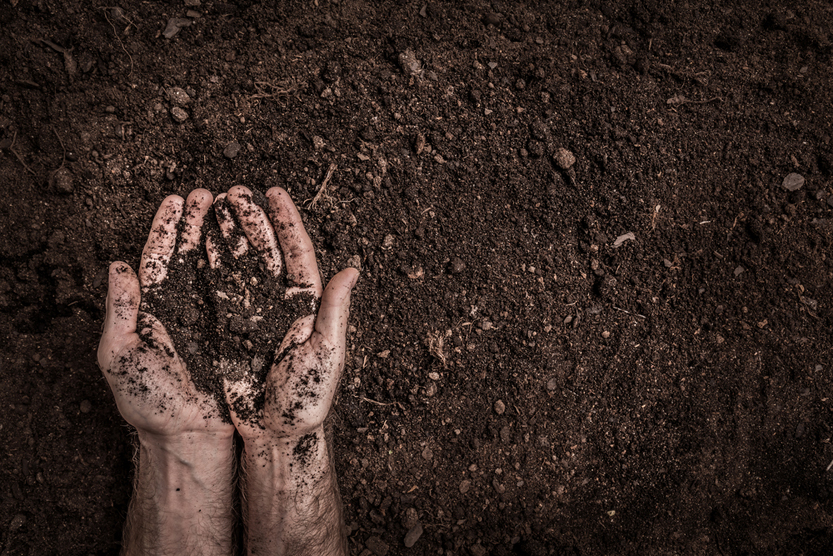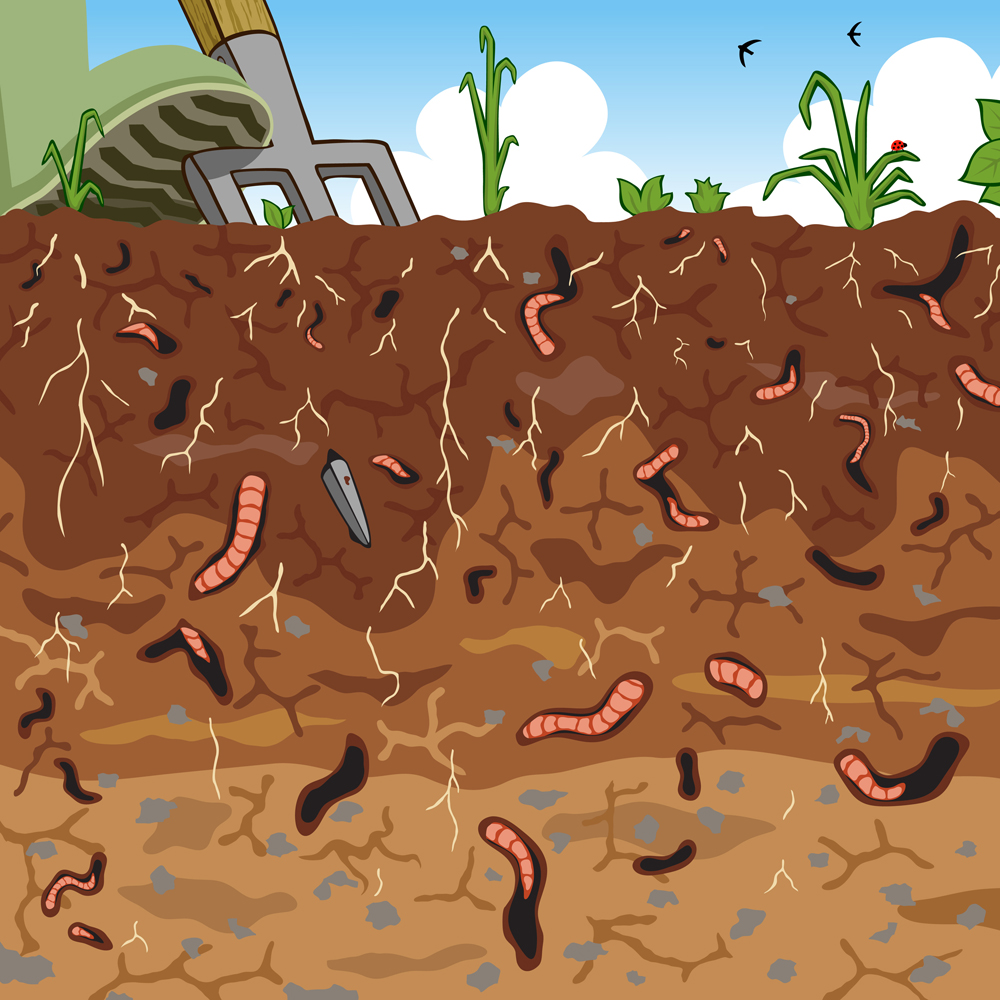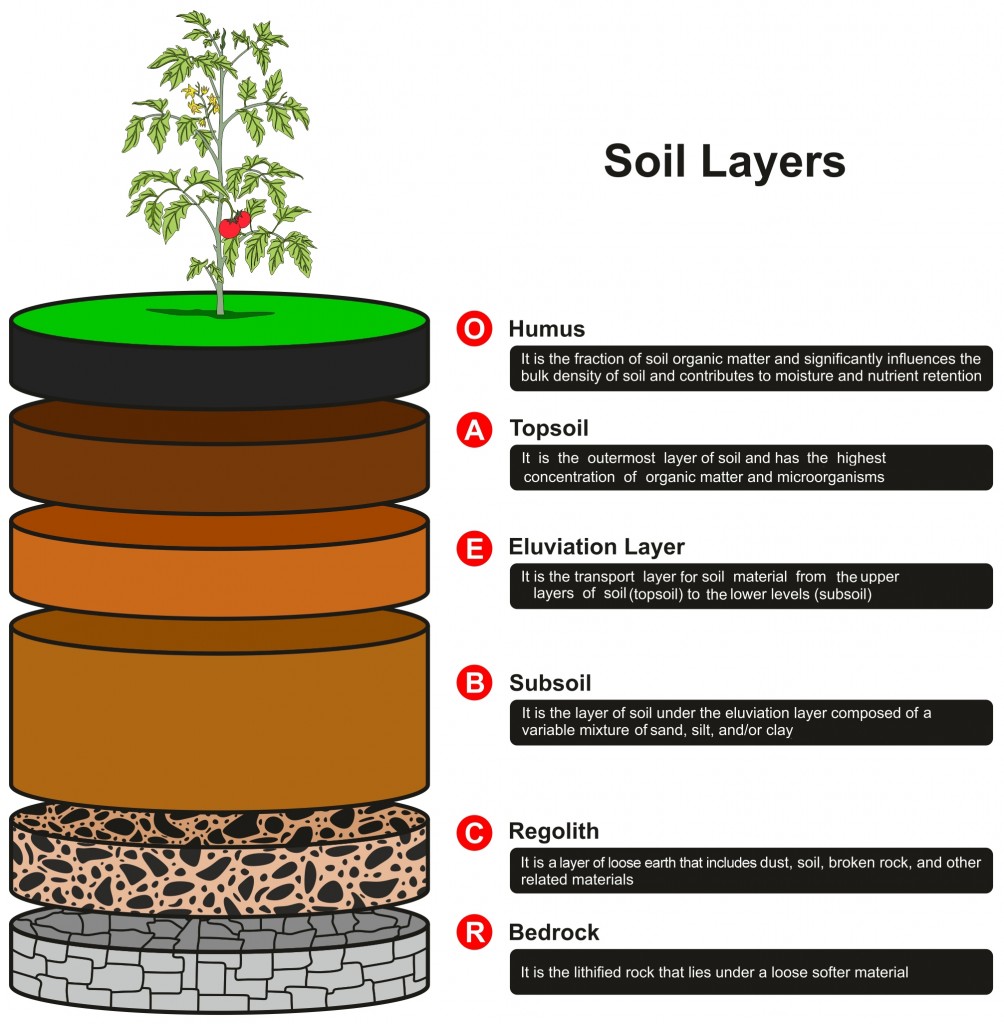Table of Contents (click to expand)
Soil is formed by a combination of factors like climate, weathering a parent rocks, living organisms over a period of time. Soil has six layers.
Although many of us live in a concrete jungle in the modern age, we still haven’t reached a generation that doesn’t know what soil is! That’s a good thing, because soil is as necessary for life as sunlight and water. Just as the atmosphere is compared to a blanket wrapped around the earth, the soil is a blanket for the earth’s surface. Sure, dirt may soil your clothes, but it’s also necessary for sustaining life on Earth.
If there was no soil, how would most of the crops grow? If there were no crops, what would humans and herbivores eat? If there were no herbivores, what would carnivores eat?
What Is Soil?

Soil is a natural mixture comprising minerals, organic substances, liquids and gases. Soil has a definite form, composition and structure, but this composition varies from place to place. Just like our flora and fauna, soil is also incredibly diverse. Furthermore, soil does not have a uniform depth around the world. Areas where bedrock is exposed, no soil exists, but in other areas, soil can go as deep as 10 meters below the surface.
The Average Composition Of Soil Ingredients (In Percentage)
- 45% Minerals: minerals comprise clay, sand, silt, gravel and stones. These minerals give texture to the soil. They feel gritty and can be seen with the naked eye.
- 25% Water: the amount of water varies, depending on the holding capacity of the soil and precipitation.
- 25% Air: air and water occupy the pores of the soil. It is essential for plant growth and for the survival of other living organisms in the soil.
- 5% Organic matter of humus: humus is composed of dead plants and animals, in addition to billions of microorganisms.
Also Read: Why Does Soil Always Look Brown?
How Is Soil Formed?
Soil is the result of an interaction between many factors over an extended period of time. These factors are climate, living organisms, landscape positions and parent material.
-
Climate
Climate is a major factor in determining the composition of soil. Climate determines what kind of plant and animal life can sustain on and in a given ecosystem of soil. Climate influences soil temperature, chemical weathering and precipitation. Warm and moist climates, such as those found in the tropics, accelerate plant growth and organic matter production, as compared to cold climates where growth is slow and cautious. Rain causes leaching or draining of minerals, thereby transporting them deep into the soil. Climatic conditions like rain, freezing and thawing lead to the breakdown of parent rock material.
-
Parent Material
Parent material consists of minerals like volcanic ash, weathered rock, and sediments that are deposited by air and water, which get broken down to form soil. This explains the name ‘parent’, because these materials generate their offspring—the soil. Soil develops quickly if materials are more permeable to water, as compared to clay materials.
-
Living Organisms

When leaves, twigs, bark or fruit fall from the plant, they turn into humus through natural decomposition. They are decomposed by microorganisms, fungi, bacteria and earthworms, which release nitrogen and sulphur that can be used by the plants. This makes the soil rich in nutrients. Humus and the plants’ roots help to hold the soil particles together, preventing erosion.
-
Landscape Positions
The steepness, shape and length of slopes will determine how water flows into or off the soil. If the slope is too steep, water starts flowing off the soil, eroding the top humus layer and making the soil less nutritious for plant growth. At higher elevations, soil can be too dry, while in wetter locations, there might not be a proper balance of soil oxygen, nutrients and water.
-
Time
Time is responsible for horizon formation. The longer the soil is exposed to the soil-forming factors mentioned above, the greater will be the development and composition of the soil. Soils found on steep slopes and windy areas take more time to form, due to continuous erosion, as compared to older and more physically stable areas.
Layers Of Soil Or Soil Horizons

If you look at a soil pit, you will notice different layers of soil of varying colors and texture. These layers are known as soil horizons. These divisions of layers are called the soil profile. These layers can be identified in terms of their differences in color, texture, thickness and structure. The layers are classified by capital letters—O, A, E, B, C and R. Together, they are called the master horizons.
- O horizon: the topmost layer, consisting of organic matter or humus, giving it a dark color.
- A horizon: the mineral layer where most root activity takes place. It is considered to be the most productive layer of the soil.
- E horizon: consists of sand and silt particles. It is whitish in appearance due to the leaching of minerals.
- B horizon: known as the subsoil, this is the area where the leached minerals accumulate. It is usually dense, light in color and low on organic matter.
- C horizon: the substratum that consists of disintegrated parent material, with less clay and other sediments.
- R horizon: the last layer of the soil is the bedrock. Bedrock is the deepest and hardest layer, and is not considered soil at all!
Who knew that soil could have so many layers to it! Helping plants grow is a critical responsibility, so it makes sense that there is some nuance and complexity in the “dirt” of the world. Just like wine, soil takes its time to form and reach its peak. After all, it’s not an easy job to literally hold everything together!
Also Read: How Does The Earth Get More Rock On Top Of Other Rocks To Give Us Geological Layers?
How well do you understand the article above!

